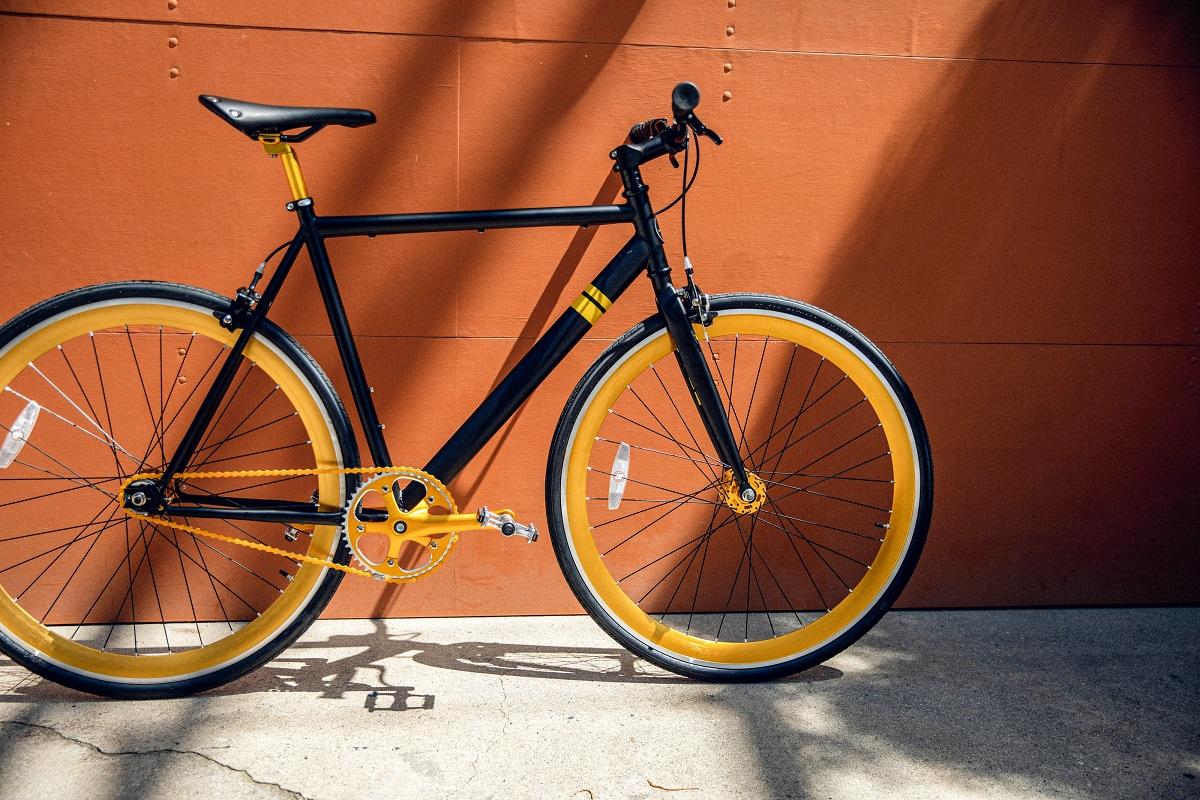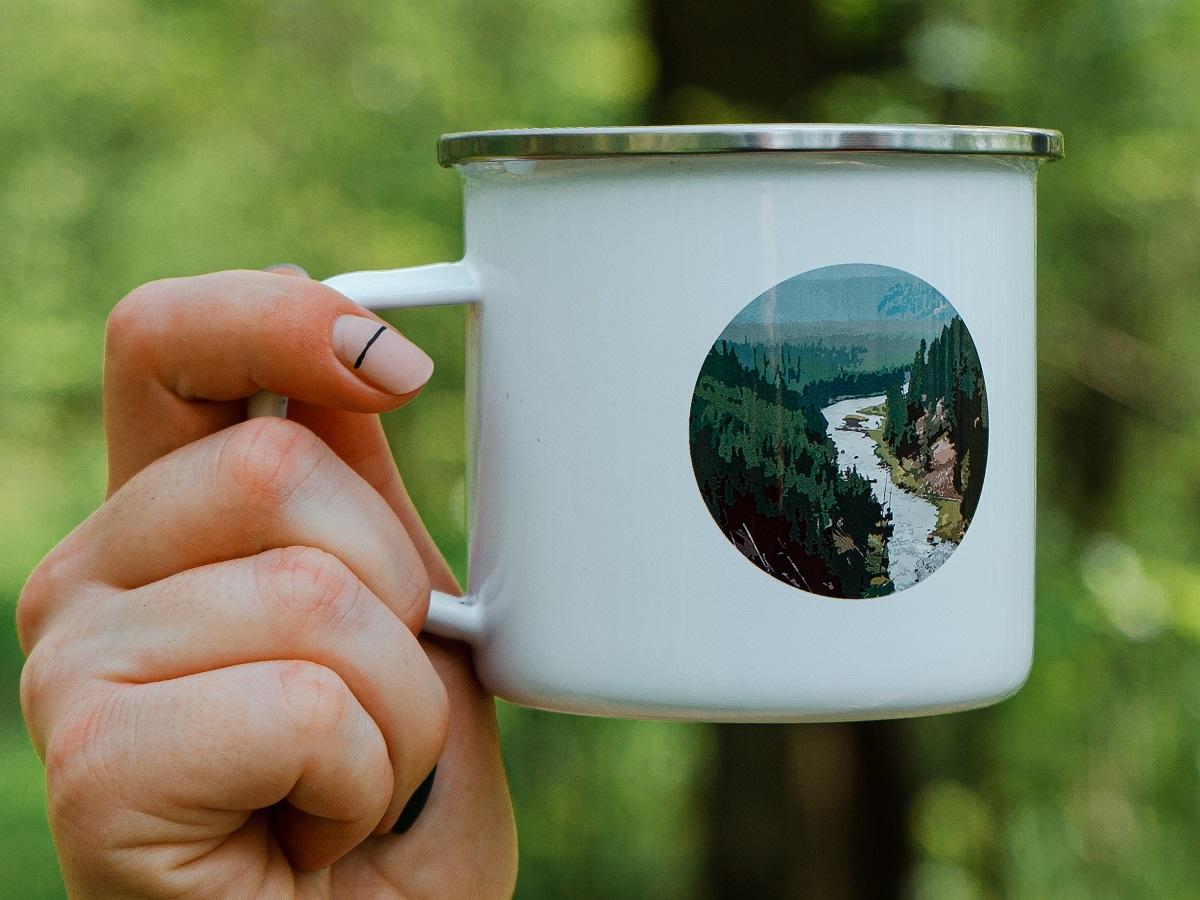No one likes to have rusted metal furniture lying around the house, as worn-out metal furniture can ruin the aesthetic appearance of your property.

So, what's the easiest way to spruce up your old patio furniture or garage doors without replacing them? The most obvious solution is to paint them since a fresh coat of paint can change the whole appearance of old metal items. Arrange some newly painted metal furniture on your patio and it’ll look so much more welcoming and appealing.
You can choose any ordinary or top notch acrylic paint for painting a metal surface as long as you know the basics of painting metal. The requirements and painting techniques can vary depending on the metal painting project. But don't get frazzled because today, we'll discuss whether acrylic paint can be used on metal surfaces. If you want to know more about paint types comparisons, check our previous article acrylic paint vs oil paint.
If you are looking for something DIY today but painting metal is not up your alley, our next article discusses how to repair a leather sofa. If the most comfortable place in your home needs your attention, do consider giving that article a quick read!
Without any more dilly-dallying, let's get those paintbrushes ready!
What Type Of Paints Are Suitable For Metal?

When it comes to painting metal surfaces, you mainly get three paint choices that we've highlighted below:
1. Oil Paints
If you don't want to use a primer while painting metal surfaces for outdoor and indoor use, oil paints are your best option. They work beautifully with metal without using a sealing agent. However, oil-based paints are much more expensive compared to water-based paints, so consider your budget when using oil paints to paint metal.
2. Acrylic Paints
Ordinary water-based acrylic paints are excellent for painting metal indoors because they dry quicker compared to other paints. But you will need to use a primer and seal the acrylic paints if you want them to last longer on the metal surface.
There are also special varieties of acrylic paint that are perfect for outdoor metal painting projects. In fact, you can apply different types of acrylic paints for both indoor and outdoor use for a metal painting project.
3. Spray Paints
If you are a beginner, using spray paint might be your easiest option for painting metal without any hassle. Using spray paints is also the fastest way to paint metal because you won't need any priming or sealing. But, spray paints don't last very long, and you might need to apply a fresh coat of paint from time to time.
Can You Apply Acrylic Paint Without A Primer?
Even though oil paints can be used without any primer, you need to apply a primer to the metal surface before painting it with regular acrylic paint. The main reason is to protect the metal from rusting due to moisture. Priming also helps the acrylic paint to adhere to the slippery surface easily.
Acrylic paints are porous and might come with certain water-resistant qualities, but they're generally not waterproof. As a water-based paint, acrylic offers a higher risk of rusting with time than oil paints. Exposure to water and moisture can damage the paint which results in corrosion quite frequently if you don't use a primer on the metal.
You need not apply a primer with some metals, such as stainless steel, as it’s naturally resistant to rusting and oxidation. But it would be best to prime the traditional metals because they are highly prone to rust and moisture, and require extra care.
How Can You Seal Acrylic Paint On A Metal Surface?
As we mentioned, regular acrylic paints are not naturally waterproof, so by sealing the paint, you can make sure that it becomes water-resistant after painting the metal surface. You can use varnishes or commercial paint sealers, available in any local hardware store, to maintain the water-resistant quality of the paint. There are many ways to know how to varnish acrylic painting for a smooth and satin finish.
Furthermore, sealing the paint can help prevent scratching the newly painted surface and protect it for several years. Depending on the type of acrylic paint you are using for painting metal, you may or may not need a sealer.
If you use exterior acrylic paint, there's no need to apply a sealer separately as the exterior paint comes with a built-in sealer. But, you need to seal acrylic paint if you are using an ordinary water-based acrylic paint variety.
Can You Paint On Metal Using Acrylic Paints?
Now that you know the basics of using acrylic paint on metal, let's look into the steps you need to follow to finish an acrylic painted metal project successfully.
Step 1: Gather The Materials
The first thing you need to do is gather all the necessary supplies and set up your work area for the metal painting project. Here's a list of materials you'll need for the project and why they are essential.
A. Drop Cloth
Preparing the work area is the initial step as you get started with the project. Keeping your work area clean can ensure that the equipment doesn't get ruined due to dust, debris, and paint.
If you have a small work area, you can place a small plastic bag or old piece of cloth on the surface. In that way, you can prevent acrylic paint or worn-out metal pieces from damaging the surface.
For larger work areas, you can use big transparent plastic bags or canvas drop cloths to effectively protect the surface on which you are working.
B. Cleaning Rags
When you are working on acrylic painting projects, it's bound to get messy, and that's why cleaning rags come in handy during an art project. It's best to keep a few cleaning rags close by so that you can complete the project smoothly and avoid wasting extra paints or smudging the colors unnecessarily.
Furthermore, cleaning rags help remove dust and debris to create an even finish. You can use cleaning rags made from microfiber materials for gathering and cleaning off dust. Alcohol wipes can also be effective in keeping your work area clean and tidy by wiping spilled paints.
C. Masking Tape
Even though using a painter's tape might seem unnecessary, it can greatly help you stay within the borders and prevent you from painting the wrong areas. Thus, it might be effective in saving a lot of extra time on your metal projects.
But, how does a painter's tape work? By putting painters' tape on the metal surface, you can ensure not to paint the areas that don't require coloring while applying paint to adjacent areas. It helps you get a clear idea about which areas need paint and help you stick to those areas specifically while painting.
Moreover, by using painters' tape, you can prevent damage to the metal surfaces as it doesn't leave behind a sticky residue once you take it off.
D. Cleaner
You can't apply paint on metal without cleaning the dust and debris from the surface first. Hence, proper cleaning is an essential step in the preparation process.
You can use an old but clean rag soaked in warm soapy water to clean dust or debris from the metal after scraping off the rust. However, using soap, water, and a damp cloth might not be enough to clean stubborn residues, and you will need to use a stronger cleaning solvent under these circumstances.
Commercial cleaning solvents are specially formulated to cut through persistent grease build-up to help you clean the entire metal surface in a jiffy.
E. Gloves
When you're working on metal in acrylic paint projects, always remember to use protective clothing to avoid injuries and accidents. For instance, wearing latex gloves can protect your hands from paint and scrap metal residues.
You can also try putting on some protective goggles while cleaning the metal surface to avoid getting tiny metal pieces in your eyes. Furthermore, if you are using acrylic spray paint for the project, don't forget to wear a face mask to avoid inhaling the paint fumes from the spray cans.
F. Wire Brush
If you want to paint some old metal furniture, you need to scrape off the rust and old paint first, which can be labor-intensive. But, a wire brush with stiff and durable bristles can be sturdy enough to scrape off impurities and paint residues, making the task a lot easier.
You can use different-sized wire brushes based on your art projects. For instance, a small wire brush can be useful in cleaning the nooks and corners of your relatively small and delicate furniture quite effectively.
G. Sandpaper
When it comes to scraping off rust and debris from a metal surface, using fine-grit sandpaper is always a good idea. After scraping with a wire brush, you can use sandpaper to remove any old leftover paint or rust and completely smoothen out the freshly scraped surface before painting.
H. Primer
Once you have sanded the metal surface, you need to apply primer to prevent it from rusting over time. It acts as a protective coating on the metal to cover old rust and shield it from water and moisture.
Prime also works as a cohesive binding agent to help the paint stick to the metal surface. You can use a spray primer instead of a traditional primer paint to coat the metal evenly without any hassle. Using spray primer can even reduce the drying time significantly to help you quickly apply acrylic paint.
I. Paint
You can find versatile acrylic paint in different varieties to paint on various surfaces. An acrylic spray paint can be the perfect choice for painting any metal surface, and you can use different acrylic paints for outdoor and indoor purposes.
Say you want to paint screen doors in the living room; you can use any regular quick-drying acrylic paint. But, for painting your backyard metal fence, use outdoor or exterior paints for better and more durable results.
J. Paintbrush
If you want to use traditional acrylic paint on metal instead of using spray paint, you'll need to buy some paint brushes to apply acrylic paint. You might need to buy different-sized brushes to cover the entire area of your project.
A large, flat brush might be good for painting open and wide areas on the metal surface. But, you might need a smaller brush to add finer details and cover all the corners successfully.
K. Sealer
Apply sealers to protect your project from moisture and scratching, as they offer a finished look to your metal painting project. For traditional acrylic paints, you need to buy an acrylic paint sealer that can offer long-lasting protection to the paint. However, as mentioned before, if you use exterior paint for painting outdoor metal surfaces, you won't need a sealer.
Step 2: Scrape Off Rust And Old Paint
After you have gathered the necessary materials, it's time to start preparing the metal surface before you can apply the first coat of acrylic paint. If the metal has some old paint or shows any sign of rusting, you need to scrape it off using a wire brush.
No matter what size wire brush you choose, make sure to cover all the crooks and crevices of the entire metal surface. In that way, you can get rid of even the last particle of rust, old paint, and debris using the wire brush.
Step 3: Sanding It Down
Once you've scraped the entire metal surface using the wire brush, it's time to smoothen the surface with a fine-grit sandpaper. 150-grit sandpaper can be effective in removing any persistent rust or old paint, and you can clean it quickly.
You can also use a cordless electric drill instead of sandpaper and brush to remove rust and paint. If you are well-experienced in using power tools, attach a wire brush to the drill and scrape off the old paint from large metal surfaces in much less time. But remember to wear your headphones while using a power drill.
Step 4: Cleaning It
Next, it’s time for cleaning the metal to remove all the rust and paint residues after you’ve scraped and sanded the surface. You can simply use some soap and water to clean thoroughly and for a freshly scraped surface, using a clean, dry rag will be sufficient. And once you've cleaned the metal with soapy water, let it rest so that it can become completely dry.
Alcohol wipes also work quite well for cleaning metals, or you can apply a commercial cleaning agent to remove persistent grease and tiny dirt particles. You must ensure that the metal surface is spotlessly clean before you paint it.
If the metal is not cleaned correctly, the paint job can look lousy and peel off easily. So, try not to skip the cleaning process even if the metal looks clean to your naked eyes.
Cleaning the surface becomes even more essential if you use galvanized metal for your painting project. Galvanized metals tend to attract oil and grease that you often overlook for which you can use a strong detergent to completely remove them from the surface.
Step 5: Priming It
After the metal surface is dry and clean, it's time to prime it. You can either use a spray primer or a traditional liquid primer paint for this process. Whichever primer you choose, carefully read and follow the instructions provided on the primer container before applying them to the metal.
If you are using spray primer, remember to shake the spray cans for around two minutes to apply the primer evenly throughout the metal surface. Also, only use primers designed for acrylic paint that are suitable for metals.
Any oil-based primer usually works well with acrylic paints, and if the primer is specially formulated for metal, it'll give you the best results. Apply two thin primer coats uniformly and allow the first primer coat to dry for 2 hours before applying the second coat.
By applying two coats, you can offer better protection from oxidation, rusting, and corrosion over time. The primer will help the paint adhere to the metal surface and ensure that it lasts longer without peeling off soon.
On top of this, when the metal is quite old and heavily corroded, coat it with a layer of zinc-chromate primer, and then apply any acrylic paint primer. Apply the acrylic paint primer on the entire metal surface immediately after working with the zinc-chromate primer. It acts as the first layer so that the regular primer can stick to the surface conveniently.
Step 6: Paint Away
Once the metal is ready after priming, you can start applying the acrylic paint. Any ordinary acrylic paint will be enough if you want to paint inside, but you'll need exterior paint for painting outdoors.
You can choose acrylic spray paint or liquid paint for the painting process. For liquid acrylic paints, you'll need to buy some paint brushes to apply paint to the metal surface uniformly.
Whichever type of acrylic paint you choose, always apply two coats of the shade and allow each coat to dry up completely before going forward with the second coat. You might need to apply as many as seven thin and uniform coats while using spray paint.
If you're applying different colors, you can even work with painter's tape to prevent painting over the wrong areas. Let your imaginations run wild and experiment with various color combinations while painting the metal surface.
And once you've completed the painting, set the project in a secure place and leave it to dry. It can take up to 48 hours for the acrylic paint to dry completely.
Step 7: Sealing The Deal
If you are using regular acrylic paint, you need to add a sealer that ensures the longevity and durability of the paint. You can even apply an acrylic gloss finish to the metal painting project by sealing the paint. However, you can skip this step if you use exterior paints, as they come with a built-in sealer.

Can Acrylic Paint Be Used On Metal Final Thoughts
And with that, we come to the end of our guide about painting metals with acrylic paints. After going through our article, we hope you have gained a better perspective on how acrylic paints work on metal surfaces.
Even though it might sound like a lot of work if you follow the steps that we've mentioned above, taking up a new metal painting project can be a fun job. No matter what the project is, don't shy away from playing around and experimenting with different colors while painting. And always remember to put on your protective gear because safety comes first.
On that note, we'll sign off. Until next time!
